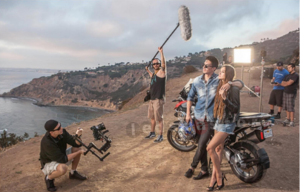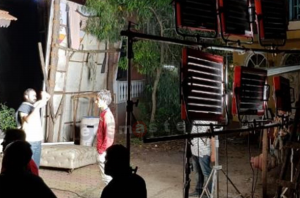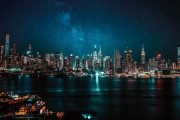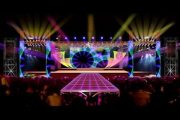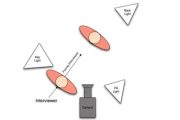The Importance of Lighting in Film Creation
1. The effect of lighting on the expressiveness of films
In the professional production process of movies, although the principle of the picture is to be realistic and natural, in fact, almost no good works can be produced only by relying on natural light. Therefore, artificial lighting is used for supplementary lighting in film and television production. Indispensable. At the scene of film and television production, especially outdoor shooting, the brightness of natural light is often unpredictable and uncontrollable. The color temperature of natural light is also changing as time goes by in the morning, noon and dusk. From this point of view, film and television lighting is often required to have higher And the brightness that can be finely adjusted, as well as a wider range of color temperature adjustment. High-power professional film and television lighting, on the basis of ordinary lighting, can also adjust the maximum power according to the needs of the film and television plot to produce the effect of exposure strong light, with a maximum power of 36000lm, which can simulate the vast majority of Strong light environment. You can also use a very small amount of power to fill the characters with a small amount of light when shooting night scene videos to avoid too much fill light and “too fake”. In addition to catering to changes in natural light, color temperature adjustment can also actively simulate scenes with different color temperatures, such as early morning, noon, dusk, bonfire, key light, etc. The artistic effect is to achieve a retro shooting atmosphere. In addition, different light shines on the object, the color of the object may be different, taking the color of the object under the sunlight at noon as the standard, different artificial light shining on the same object may show different color brightness, different Therefore, the ability of professional film and television lighting to restore color must be infinitely close to sunlight. The higher the color rendering index, the better and more realistic the color display of the illuminated object. Film and television lighting is used for lighting, not just lighting. This article will first analyze the role of film and television lighting from this perspective, and give some key points that film and television crews or short video creators need to pay attention to when purchasing professional film and television lighting, so that Restore the original image of the creative idea in your mind.
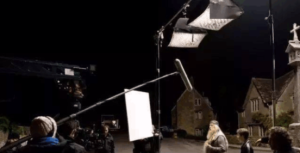
2. The effect of light on the image of objects
There are many factors that affect the shape of objects. But the most important thing is the shape of the object itself and the position of the light source. Different light positions can make the same object show different shapes. For example: Suppose a cone, when the camera and the object are on the same horizontal line, change the position of the light, the cone will show different shapes. When the light is on the front, the cone presents a flat surface with uniform brightness throughout. When the light is on one side, the cones appear to transition from light to dark, creating a three-dimensional effect. When the light is on the back, the main body of the object becomes a black hole, with bright outlines all around. Of course, the above are all single-lamp lighting, and the light position mentioned is the main light position. In actual shooting, a three-light lighting scheme is generally used, one main light, one auxiliary light, and one outline light. Among them, the main light is the main plastic light in the film and television lighting, and the position is usually in front of the side of the subject. The specific key light position should take into account the development of the plot, the scene scheduling, and the character of the characters. The main light of different light positions forms different shadow areas and shades on the faces of the characters. The position of the main light during normal main light illumination is within the space range of 30°-60° between the subject and the camera in the horizontal or vertical plane, and the height is also 30°-60°. The light position and angle of the auxiliary light are determined according to the modeling requirements and artistic effects of the characters. Generally, the light position of the auxiliary light is close to the camera and the horizontal plane of the camera to form an angle of -30°-30°, and the height is also relatively low, which can illuminate The shadows seen from the camera’s point of view can be adjusted to the advantage of the shadow density and level caused by the key light. The intensity of the main light and the auxiliary light is different, which can make the picture produce different tone effects: if the light ratio of the main light and the auxiliary light is large, the shadow of the character’s face will be thick and the three-dimensional effect will be strong, which is a high-key and soft-key effect. The rim light is the backlight illuminated from behind the subject. The lamps are generally spotlights, the light is hard, and its intensity can be close to or greater than that of the main light, and the light ratio to the main light is 1:1 or 2:1. The selection of the illumination angle of the contour light is very important. Generally, the contour light is located on the other side of the main light, and the vertical illumination angle of the contour light should not be too large or too small. If the vertical angle is too large, it will produce an unsatisfactory top light effect. If the vertical angle is too small, the camera will have a dazzling effect and affect the clarity of the picture.
There are also 3 basic light positions on the vertical plane: flat light, top light, and overhead light.
In life, the light source usually comes from the upper side, outdoor sunlight or moonlight, indoor top light and table lamp. Therefore, our normal feeling for characters is that it is bright up and dark, convex bright and concave dark. But when shooting people with flat light, this feeling completely changes. Above and below, the brightness of the convex and concave parts is all uniform. Therefore, the flat light is a typical light, which can eliminate the three-dimensional feeling of the subject and make the subject appear flat.
When the light is at a depression angle, the characters appear in a familiar state, the top is bright and the bottom is dark, and the 3D effect of convex light and concave dark makes our eyes feel very comfortable. But when the light level continued to rise until it reached the top of the head, the effect of highlighting and concave-darkness was enhanced to the extreme. At this time, the human eye becomes a black hole, and the character modeling presents a skeleton effect, so the top light is a very ugly light position.
When the subject is determined, the main factor that determines the modeling strength of the object is the nature of light, which can be divided into direct light and scattered light. Direct light can form a strong contrast of tones and a sharp dividing line between light and dark, which makes the object appear hard and heavy. Scattered light can form a moderate tonal contrast and a soft dividing line between light and dark, making objects appear soft. shades in between called midtones. In film and television production, hard light is used to express movement, soft light is used to express stillness; hard light is used to express power; and soft light is used to express beauty. Of course, in the actual shooting, the hardness and softness of the tone does not depend solely on the nature of the light, but also on the position of the main light and the illuminance of the auxiliary light, that is, the size of the light ratio, but it is the light that plays the main role. nature.
3. The emphasis of lighting
This is the easiest way to stand out the subject from the background. When shooting, we only let the subject see the light, and let the background drown in the dark, our eyes will naturally be attracted to the bright subject first, so that the person stands out from the background.
It is the most expressive level to stand out the subject from the group. In a group, whoever is the brightest(darkest) is the most eye-catching, so when shooting, whoever is the most eye-catching is to be the brightest, such as one in the German film Tin Drum There are three people in the camera, and the one in the middle is particularly bright, so he steals the audience’s attention.
4. The effect of lighting on the mood of the audience
As a means of artistic expression, lighting also reflects emotions. For example, at the beginning of the American film The Godfather, the yard is sunny, the cheerful Italian folk songs motivate the singing and dancing crowd, and the bright tone is filled with the warm atmosphere of the wedding celebration. At the same time, the room was dark. The godfather is talking about a “killing business” with his family, and the low and dark tone is suffocating.
The tone is divided into two levels, one is the light and dark of the overall brightness of the picture, and the other is the image.
Light and dark contrast. These two levels correspond to the categories of emotions and the intensity of emotions, respectively. The influence of these two aspects of emotion is based on the physiological-psychological induction of the human eye to light. Bright light excites, low dim light depresses, bright light
The shades express excitement, and the dark shades express repressed emotions. The approximate relationship between tone and mood should be: bright tone makes people excited, joyful, joyful, sweet, relaxed, etc. Dark tones make people depressed, sad, sad, bitter, heavy, etc.
The emotional intensity reflected by the tone is expressed by the light and dark contrast of the image, and the contrast is large.
The tone is hard, and the emotional intensity of the expression is high. The contrast is small, the tone is soft, and the emotional intensity of the expression is low. The corresponding relationship between emotional intensity and tone hardness should be roughly: hard tone, high-intensity emotions – tension, intense, thrilling, horror, etc. Soft tone, low-intensity emotions—relaxation, soothing, melodious, gentle, etc. The middle tone is in between, and its brightness contrast is close to how the human eye perceives things under normal circumstances, so the emotions it expresses are normal, peaceful, and objective.
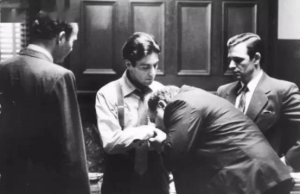
5. The symbolism of light
In the Bible light is used to symbolize God, truth, virtue, happiness and vitality, while darkness is used to symbolize evil, cruelty, demons, pain and the threat of death.
6. Conclusion
The lighting in film and television has too many functions, and its role in film and television production is irreplaceable. Whether it is domestic or European and American films, they all have strict requirements for the lighting in the film, in order to achieve them. A purpose that greatly stimulates and enjoys the spirit of the audience. Therefore, we must carefully grasp the use of lighting in the production process.
